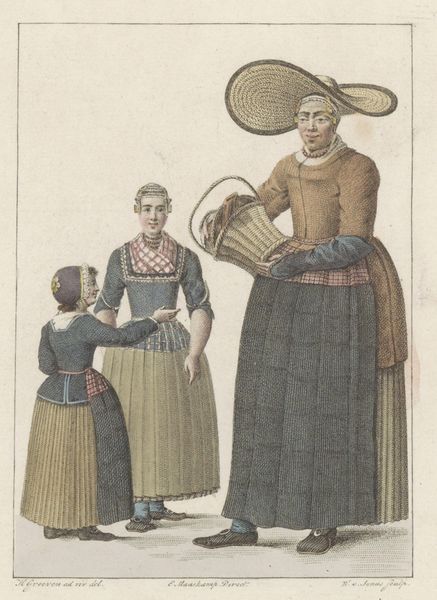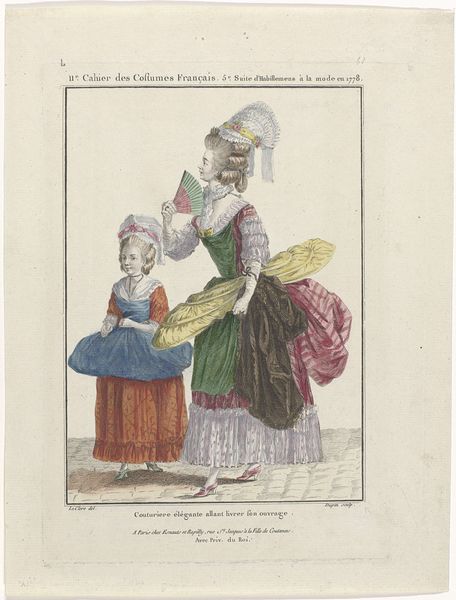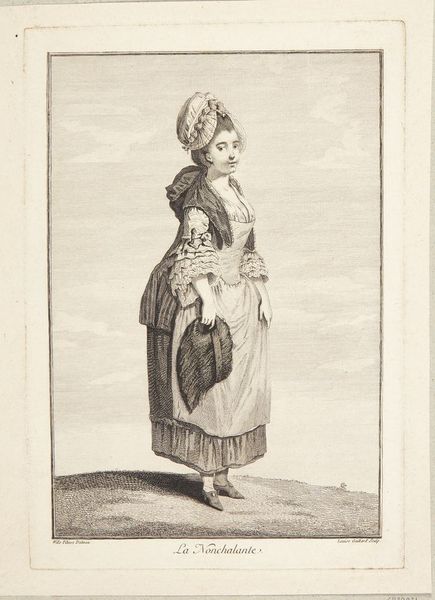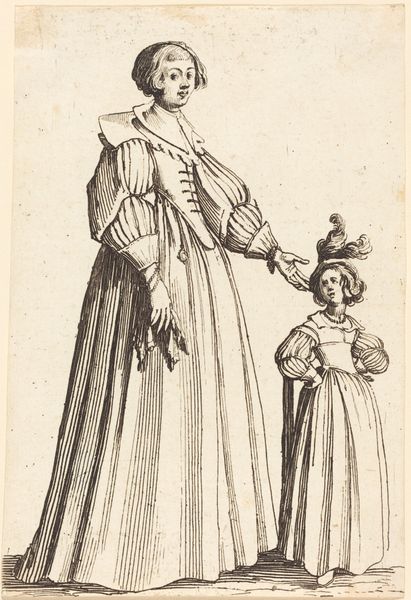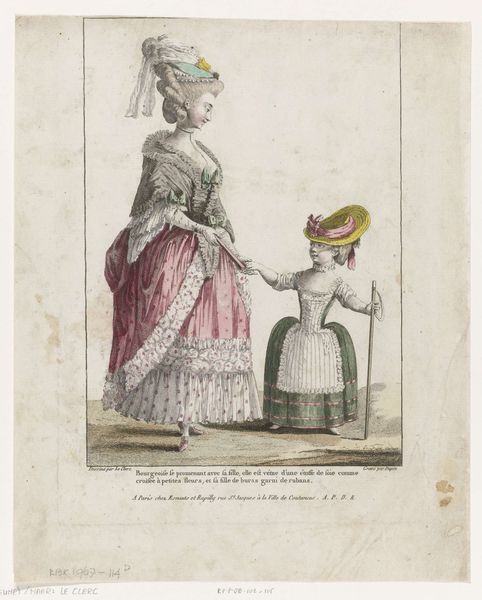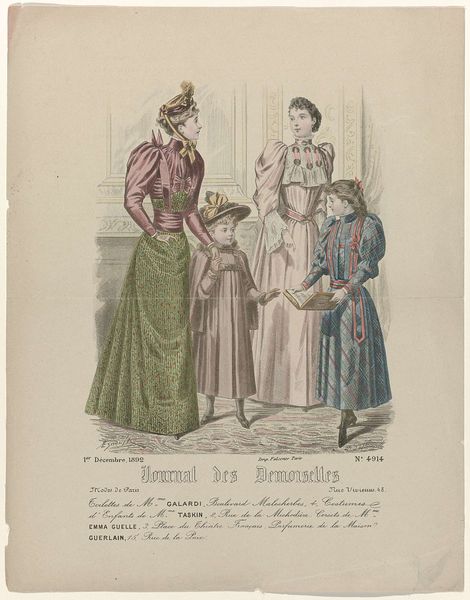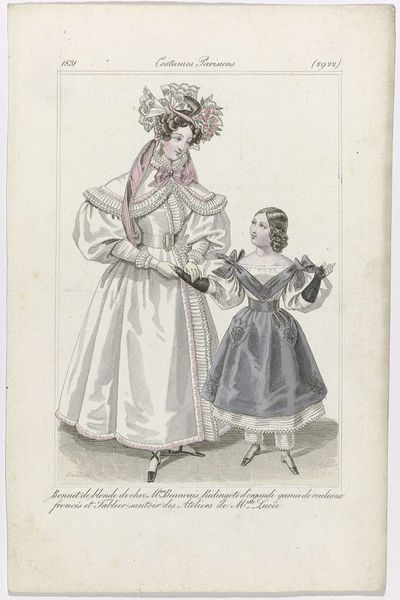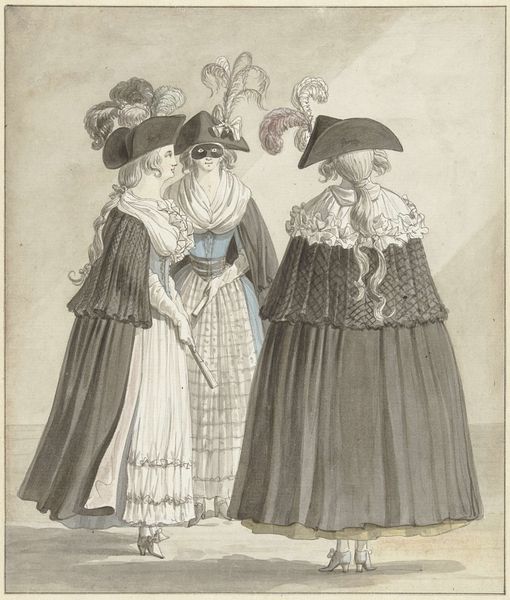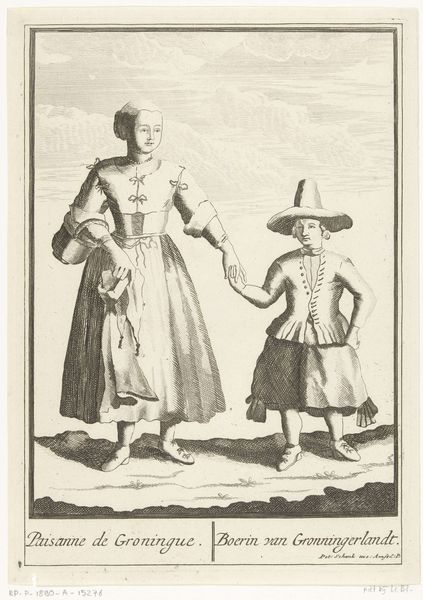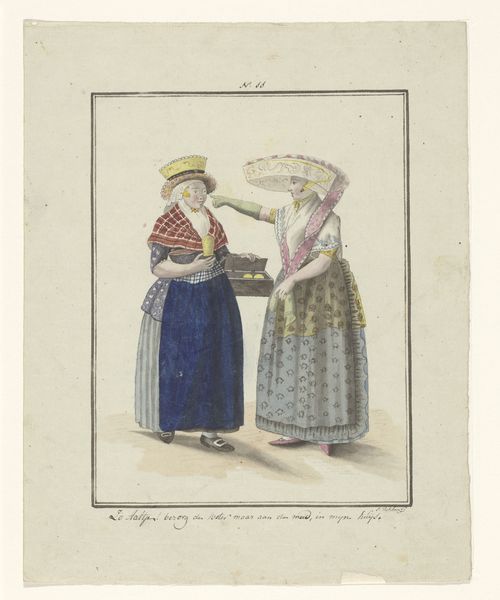
print, engraving
#
portrait
# print
#
figuration
#
genre-painting
#
engraving
#
realism
Dimensions: height 174 mm, width 107
Copyright: Rijks Museum: Open Domain
Editor: So this is "Woman and Two Children from Assendelft," an 1824 engraving by Willem van Senus, currently at the Rijksmuseum. It's striking how their clothing really defines them—the large hats and layered skirts give such a distinctive look. What jumps out at you? Curator: It's fascinating to consider this piece as more than just a portrait, but as a document of socio-economic conditions. What do you observe about the clothing beyond its distinctive style? Is it decorative or practical? Editor: Well, it seems practical, maybe for working outdoors? The woman carrying the basket… it seems functional, not particularly decorative. Curator: Exactly. Think about the societal roles defined by such clothing. The large hat, while striking, likely served to shield the wearer from the sun during work. The layers, perhaps offering both modesty and protection. Consider also that these clothes might indicate a certain level of regional identity, even resistance to centralized cultural norms. How might representing them so realistically affect or challenge the viewer? Editor: It could show the dignity of their labor, but maybe also reinforce social divisions. Almost like saying, "this is their place." Curator: Precisely. And how might that differ depending on who the intended viewer was? Was it an internal or external audience? Editor: That's something I hadn't considered. Thinking about how art portrays ordinary life can tell you so much more about that time than just what people looked like. Curator: Agreed, it opens up an intersectional way of analyzing this artwork.
Comments
No comments
Be the first to comment and join the conversation on the ultimate creative platform.
